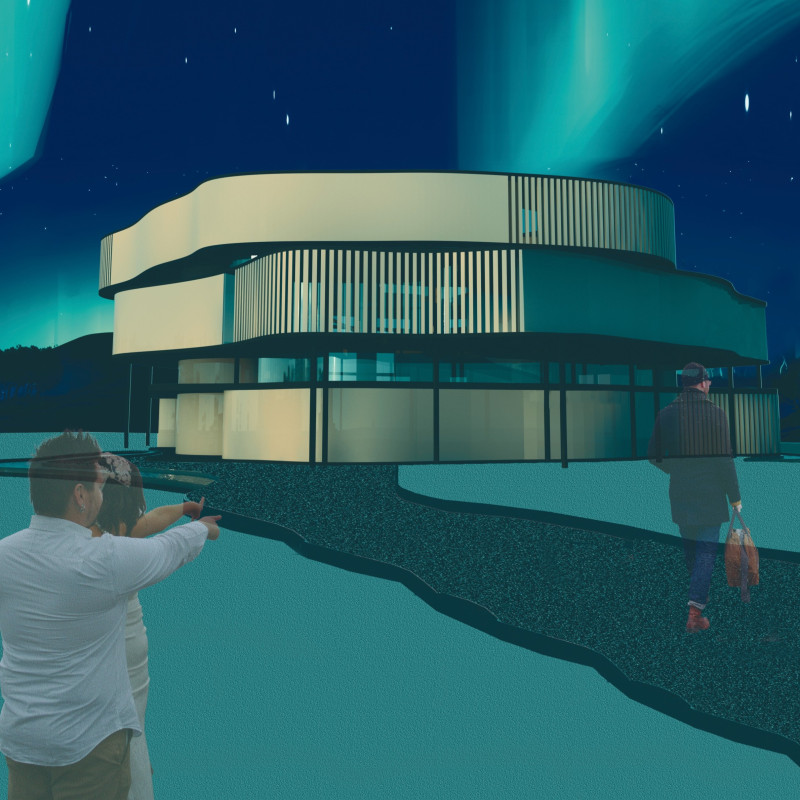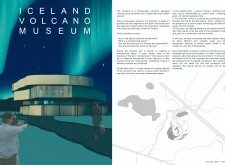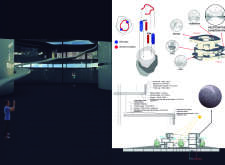5 key facts about this project
The Iceland Volcano Museum serves as a multipurpose facility that primarily functions as an exhibition hall, located near the Hverfjall volcano. The design emphasizes the relationship between the building and the unique geological features of the Icelandic landscape. By drawing inspiration from volcanic characteristics, the museum not only provides a space for exhibitions but also fosters a sense of community and enhances awareness of Iceland's natural environment.
Architectural Concept
The architectural concept is centered around three key forms that reflect volcanic structure. The first form is the Magma Room, which serves as a public area designed to encourage interaction among visitors. This space captures the dynamic quality of a volcanic chamber, offering well-defined boundaries that shape the visitor experience and enhance social connections.
Key Structural Elements
The second element, known as the Chimney, acts as a central conduit that links the museum's interior to the surrounding environment. This feature improves vertical circulation and creates a connection between different levels, allowing natural light to filter into the building. This integration fosters a sense of space and promotes exploration throughout the museum.
Integration with the Landscape
The third component is the Crater, which functions as an opening that directly connects visitors to the external landscape. This design feature facilitates the entry of natural light into the museum, enriching the visitor experience while maintaining a strong connection to the volcanic terrain outside. The architecture encourages a smooth transition between interior and exterior spaces, making it easy for visitors to engage with their surroundings.
Material Considerations
Material selection is essential in this design, with reinforced concrete and glass playing central roles. Reinforced concrete provides structural stability and strength, while glass introduces transparency that enhances the visual connection between the inside and outside. This choice of materials helps reflect the unique geological surroundings of Iceland and deepens the interaction between the building and its environment.
The architectural detail culminates in a thoughtful arrangement where light plays a key role in creating a connection with the landscape. The interplay between the structure and natural elements highlights the distinct qualities of the Icelandic environment.

























































